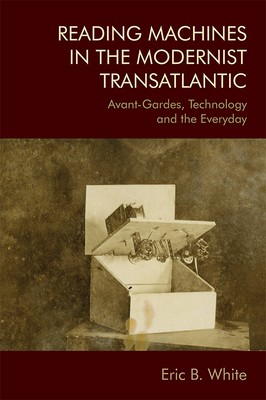
- We will send in 10–14 business days.
- Author: Eric B White
- Publisher: Edinburgh University Press
- ISBN-10: 1474441505
- ISBN-13: 9781474441506
- Format: 15.6 x 23.4 x 1.6 cm, softcover
- Language: English
- SAVE -10% with code: EXTRA
Reviews
Description
A revisionist account of technology's role in the aesthetics, spaces and politics of transatlantic avant-gardes
- Explores of a range of key avant-garde formations in the modernist transatlantic period, from the Italian futurists and English Vorticists to the Dada-surrealist and post-Harlem Renaissance African American experimentalists
- Explores writers' and artists' inventions as well as their texts, and involves them directly in the messy transductions of technology in culture
- Draws on previously unknown photos, manuscripts and other evidence that reveals the untold story of Bob and Rose Brown's 'reading machine' - a cross-disciplinary, meta-formational, and transnational project that proposed to transform the everyday act of reading
Reading Machines in the Modernist Transatlantic provides a new account of aesthetic and technological innovation, from the Machine Age to the Information Age. Drawing on a wealth of archival discoveries, it argues that modernist avant-gardes used technology not only as a means of analysing culture, but as a way of feeding back into it. As well as uncovering a new invention by Mina Loy, the untold story of Bob Brown's 'reading machine' and the radical technicities of African American experimentalists including Gwendolyn Bennett and Ralph Ellison, the book places avant-gardes at the centre of innovation across a variety of fields. From dazzle camouflage to microfilm, and from rail networks to broadcast systems, White explores how vanguardists harnessed socio-technics to provoke social change.
EXTRA 10 % discount with code: EXTRA
The promotion ends in 7d.04:45:04
The discount code is valid when purchasing from 10 €. Discounts do not stack.
- Author: Eric B White
- Publisher: Edinburgh University Press
- ISBN-10: 1474441505
- ISBN-13: 9781474441506
- Format: 15.6 x 23.4 x 1.6 cm, softcover
- Language: English English
A revisionist account of technology's role in the aesthetics, spaces and politics of transatlantic avant-gardes
- Explores of a range of key avant-garde formations in the modernist transatlantic period, from the Italian futurists and English Vorticists to the Dada-surrealist and post-Harlem Renaissance African American experimentalists
- Explores writers' and artists' inventions as well as their texts, and involves them directly in the messy transductions of technology in culture
- Draws on previously unknown photos, manuscripts and other evidence that reveals the untold story of Bob and Rose Brown's 'reading machine' - a cross-disciplinary, meta-formational, and transnational project that proposed to transform the everyday act of reading
Reading Machines in the Modernist Transatlantic provides a new account of aesthetic and technological innovation, from the Machine Age to the Information Age. Drawing on a wealth of archival discoveries, it argues that modernist avant-gardes used technology not only as a means of analysing culture, but as a way of feeding back into it. As well as uncovering a new invention by Mina Loy, the untold story of Bob Brown's 'reading machine' and the radical technicities of African American experimentalists including Gwendolyn Bennett and Ralph Ellison, the book places avant-gardes at the centre of innovation across a variety of fields. From dazzle camouflage to microfilm, and from rail networks to broadcast systems, White explores how vanguardists harnessed socio-technics to provoke social change.


Reviews